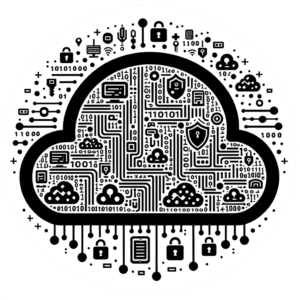Introduction to Cloud-Based Penetration Testing
In today’s digital landscape, the cloud has become an indispensable tool for businesses of all sizes. Understanding how the cloud works and its potential security vulnerabilities is crucial for effective penetration testing. Cloud-based penetration testing involves assessing the security posture of cloud infrastructure, applications, and services to identify and exploit vulnerabilities before malicious actors can. By gaining a deep understanding of the cloud environment, penetration testers can simulate real-world attacks and provide comprehensive security recommendations to mitigate risks.
Cutting-edge cloud-based penetration testing involves using specialized knowledge about cloud platforms, settings, and security measures to go beyond traditional methods. By identifying and exploiting vulnerabilities like misconfigurations, weak access controls, and loopholes in cloud services, experts can show organizations how potential attacks could harm their systems. Regular testing can help businesses keep up with changing cyber threats and make sure their cloud data is safe and secure.
Role and Importance of Penetration Testing in Cloud Security
Penetration testing is like a security check-up for cloud systems. As more and more companies use the cloud to store important information and run essential programs, it’s really important to make sure everything is super secure. Penetration testing helps find any weak spots in the cloud setup before bad guys can take advantage of them, so companies can make sure they are protected against any potential cyber attacks.
Cloud-Based Penetration Testing delves deep into the sophisticated methods used by cybersecurity professionals to assess the security posture of cloud environments. By simulating real-world cyber attacks, penetration testers can uncover weaknesses in cloud security configurations and policies, enabling organizations to remediate issues and enhance their overall security posture.
Conducting thorough security tests in the cloud is important to protect sensitive information from cyber attacks. Specialized experts are needed to analyze complex cloud structures and find potential weak spots that hackers could exploit. By learning from these tests, organizations can make smart choices to improve their cloud security measures and keep their data safe from unauthorized access and breaches.
Cloud Vulnerabilities and Threat Landscape
Common Vulnerabilities in Cloud Environments
When it comes to cloud-based penetration testing, understanding the common vulnerabilities in cloud environments is crucial for assessing and strengthening the security of cloud infrastructure. Misconfigured security settings, weak access controls, and inadequate encryption mechanisms are some of the top vulnerabilities that cyber attackers exploit to gain unauthorized access to sensitive data stored in the cloud. Additionally, insufficient monitoring and logging capabilities in cloud environments can make it challenging to detect and respond to security incidents in a timely manner.

Another prevalent vulnerability is the lack of proper network segmentation, which can lead to lateral movement within the cloud environment and increase the potential impact of a security breach. Insecure APIs and integrations with third-party services also pose significant risks, as they can expose sensitive information to malicious actors if not properly secured. Moreover, the shared responsibility model in cloud computing often leads to misunderstandings and gaps in security controls between cloud providers and customers, making it essential for organizations to clearly define and enforce their security responsibilities.
Exploiting Cloud Infrastructure: Advanced Techniques
In-Depth Analysis of Penetration Testing Techniques
Exploiting the cloud requires a comprehensive understanding of various penetration testing techniques to effectively assess the security of cloud-based systems. Penetration testing is a crucial process that simulates real-world cyber attacks to identify vulnerabilities in cloud infrastructures and applications.
One of the key penetration testing techniques is reconnaissance, where testers gather information about the target cloud environment to identify potential entry points and weak spots. This is followed by vulnerability scanning, where automated tools are used to scan the cloud infrastructure for known vulnerabilities.
Furthermore, exploitation involves leveraging identified vulnerabilities to gain unauthorized access to the cloud systems. Post-exploitation techniques come into play after gaining access, allowing testers to deepen their compromise and assess the extent of potential damage.
Overall, a thorough understanding of these penetration testing techniques is essential for cybersecurity professionals to effectively identify and mitigate security risks in cloud-based environments.
Case Studies: Successful Cloud Exploitations
As cloud technology continues to dominate the modern IT landscape, the importance of understanding and securing cloud environments has never been more critical. In the realm of cybersecurity, cloud-based penetration testing presents unique challenges and opportunities for identifying and mitigating vulnerabilities. Cloud-Based Penetration Testing delves into the intricate world of cloud exploitation with a focus on real-world case studies showcasing successful exploits.
From misconfigurations in cloud services to weak authentication protocols, the range of vulnerabilities in cloud environments is vast and ever-evolving. Through detailed analysis and practical demonstrations, this blog shines a light on the sophisticated techniques used by penetration testers to infiltrate cloud platforms and extract sensitive data.
By learning from these case studies, cybersecurity professionals can enhance their understanding of cloud security risks and refine their strategies for safeguarding against potential breaches. Stay tuned as we unravel the intricacies of cloud exploitation and empower you with the knowledge needed to fortify your organization’s cloud defenses.
Mitigation Strategies and Best Practices
Effective Mitigation Strategies
When it comes to cloud-based penetration testing, understanding and implementing effective mitigation strategies is crucial to prevent potential cyber threats and vulnerabilities. One key strategy is to ensure regular security assessments and audits are conducted to identify any weaknesses in the cloud infrastructure. Additionally, employing strong access control measures, such as multi-factor authentication and least privilege access, can help reduce the risk of unauthorized access to sensitive data.
It’s crucial to keep up to date with the latest security updates and patches from cloud service providers. By installing these updates promptly, companies can protect their cloud environment from known security risks and make it stronger. Another good way to increase security is to encrypt your data while it’s being sent and while it’s being stored to prevent unauthorized access.
Furthermore, implementing network monitoring tools and intrusion detection systems can help detect and respond to potential security incidents in real-time. By continuously monitoring network traffic and identifying suspicious activities, organizations can quickly mitigate any security threats before they escalate.
In conclusion, adopting a proactive approach to cybersecurity and implementing robust mitigation strategies are essential for ensuring the security and resilience of cloud-based systems in the face of evolving cyber threats.
Best Practices for Cloud Security
When using the cloud for security testing, it’s important to follow best practices to keep information safe. One key step is having strong controls for who can access data and how. Using methods like multi-factor authentication, role-based access, and regular reviews can help reduce the chances of unauthorized users getting into sensitive information stored in the cloud.
Regularly updating and patching cloud infrastructure and applications is another crucial practice to defend against potential security vulnerabilities. By staying up-to-date with security patches, organizations can protect their cloud environments from known vulnerabilities and potential exploits.
Encrypting data both in transit and at rest is also essential for maintaining a secure cloud environment. Implementing encryption protocols such as SSL/TLS for data in transit and utilizing encryption technologies like AES for data at rest can safeguard against data breaches and unauthorized access.
In addition, partnering with a reputable cloud service provider that prioritizes security and compliance, conducting regular security training for employees, and performing thorough risk assessments can further enhance the security posture of cloud-based systems.
Future of Cloud Penetration Testing
Emerging Trends and Technologies
Cloud-based penetration testing is becoming more important as technology progresses. Many organizations now use cloud services to store and manage their data. It’s crucial to have enhanced security measures in place to protect this data. Cloud-based penetration testing helps to find and fix any security weaknesses in these cloud environments.
One of the emerging trends in cloud-based penetration testing is the use of advanced automation tools and techniques. These tools allow security professionals to conduct more comprehensive and efficient penetration testing, ultimately helping organizations strengthen their cloud security posture. Additionally, the rise of serverless computing and containerization has introduced new challenges and opportunities in cloud security testing, requiring experts to stay ahead of the curve.
As more companies use multiple cloud services, testers need to change how they test to cover all platforms well. They have to really understand how each cloud service works and what keeps it secure. If they keep learning about new trends and using the newest tools, businesses can stay safe from cyber attacks on their cloud systems.
Role of AI, Machine Learning and Automated Tools in Penetration Testing
Using the Cloud to Improve Penetration Testing involves using advanced technologies like AI, machine learning, and automated tools to make the process of testing cloud environments more efficient and effective. As more businesses use cloud services, they need to make sure their systems are safe from cyber attacks. This requires using cutting-edge tools like AI and machine learning to find weaknesses, evaluate risks, and predict where breaches may happen in cloud systems.
Advanced computer programs can look through huge amounts of information to spot trends and unusual things that regular methods might miss. These programs can learn and get better at finding weaknesses and ways for hackers to get in. By using tools that work automatically, cybersecurity experts can save time on routine tasks and concentrate on fixing the most important security problems.
By leveraging AI, machine learning, and automated tools in cloud-based penetration testing, organizations can proactively strengthen their security posture, mitigate risks, and stay ahead of evolving cyber threats in the dynamic cloud environment.

